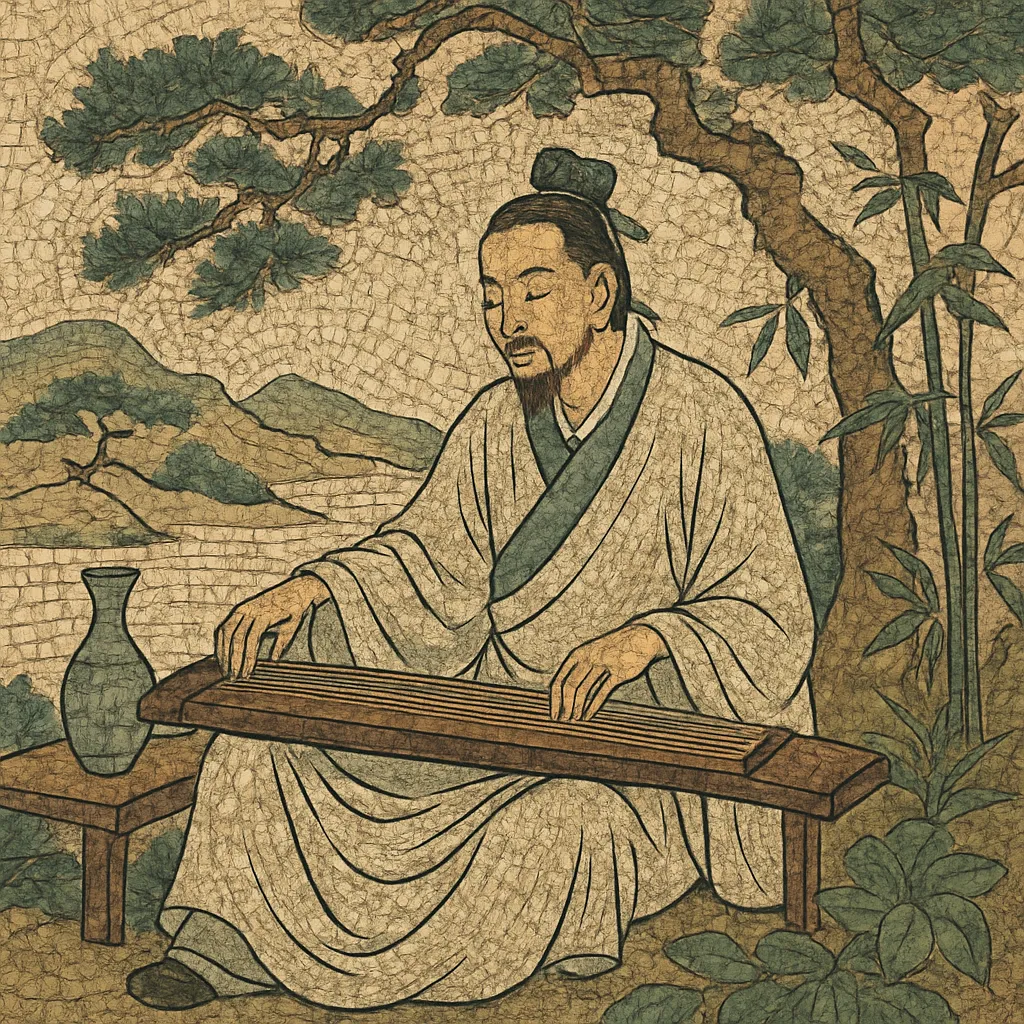Chinese literati music (wenren yue) is the cultivated, largely amateur tradition of music-making associated with China’s scholar-official class. It privileges subtlety, introspection, and self-cultivation over display, and treats music as an extension of calligraphy, poetry, and painting.
Its core sound centers on the guqin zither—often solo, or in intimate dialogue with the xiao (vertical bamboo flute). Pieces are typically poetic and programmatic, evoking landscapes, seasons, or moral reflection. Elastic rhythm, refined timbral control, pentatonic modal thinking (gong, shang, jue, zhi, yu), and a restrained dynamic palette are hallmarks of its style.
Rather than entertainment for a public audience, literati music historically functioned as a medium for personal refinement, philosophical contemplation (Confucian, Daoist), and scholarly sociability, with manuscripts and tabletures passed among connoisseurs.
The roots of literati music reach back to early Chinese elite culture, but its recognizable profile coalesced during the Song dynasty, when literati identity—anchored in civil service examinations, poetry, and painting—flourished. The guqin became the quintessential instrument of the cultivated gentleman, praised for its moral resonance and quiet intimacy.
Between the Southern Song and Ming periods, repertoire and aesthetics were consolidated by scholar-musicians. Guo Mian (Guo Chuwang) and later Ming figures such as the Prince of Ning, Zhu Quan, preserved and compiled key repertories; the 1425 Shenqi Mipu is a landmark tablature collection. The music’s ethos emphasized self-cultivation, natural imagery, and tasteful restraint, aligning with Confucian ideals and Daoist quietude.
Guqin music developed a sophisticated tablature system (jianzipu) that encodes fingering, string, position, and ornament rather than pitch alone. Three tone-types—san (open), an (stopped), and fan (harmonic)—and expressive ornaments (e.g., slides, vibrato, nuanced plucks) define the instrument’s voice. Performance practice often moves from unmetered "sanban" freedom into measured "banshi" sections.
In the 20th century, scholar-performers such as Zha Fuxi, Guan Pinghu, and Wu Jinglüe documented lineages, standardized pedagogy, and recorded canonical works. After periods of disruption, the late 20th and early 21st centuries saw a strong revival, with university programs, societies, and international performances. The literati aesthetic now informs contemporary film scoring, world-fusion projects, and modern "zhongguo feng" pop stylings, while remaining a living tradition for guqin and xiao practitioners.
Compose for inner cultivation and poetic evocation rather than virtuoso display. Choose a programmatic title (e.g., landscapes, seasons, moral reflection) and aim for clarity, spaciousness, and subtle emotional shading.
Favor guqin solo, or guqin–xiao duo. Explore the guqin’s three tone-types: san (open), an (stopped), and fan (harmonics). Shape notes with refined right-hand attacks (tiao, gou, tuo) and left-hand nuance (slides, vibrato/rou, presses, light touches) to color every articulation. Keep dynamics restrained and timbres warm, letting silence frame phrases.
Think pentatonically using traditional modal functions (gong, shang, jue, zhi, yu). Treat pitch as a locus for expressive inflection rather than fixed equal-tempered steps; micro-slides and gentle intonation adjustments are integral.
Begin with flexible, unmetered "sanban" passages to establish mood and rhetorical space, then introduce measured "banshi" sections for contrast. Use short motives that develop through variation and ornament rather than large-scale harmonic progression.
Draft ideas in descriptive sketches, then encode fingerings and positions in jianzipu-style tablature to capture technique precisely. When engaging older materials, use "dapu" (reconstructive practice) to realize historical tablature, making informed choices about tempo, articulation, and ornaments.
If vocals are desired, set classical poetry (shi or ci), prioritizing natural prosody and understated delivery. Even for instrumental works, let poetic imagery guide pacing, register, and texture.
In qin–xiao duos, treat the flute as a breathing counterpart to the zither’s inner voice. Avoid dense counterpoint; favor antiphony, echoing gestures, and shared cadential breaths.


